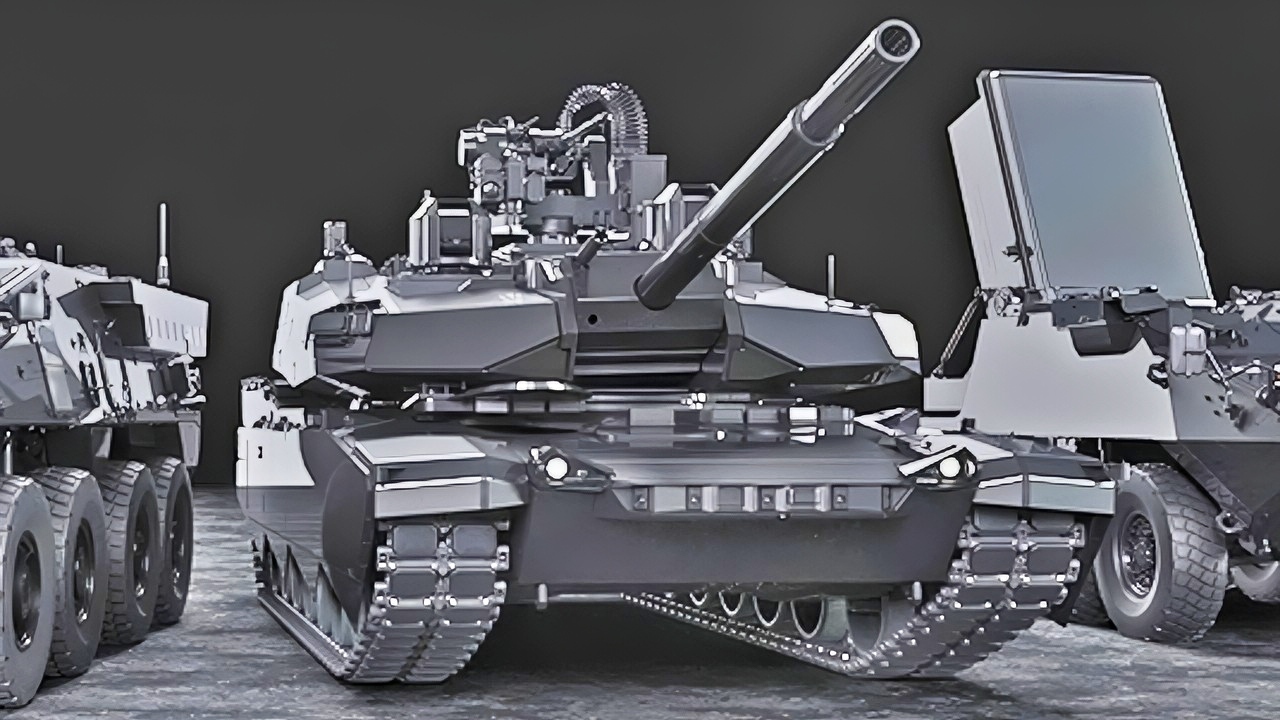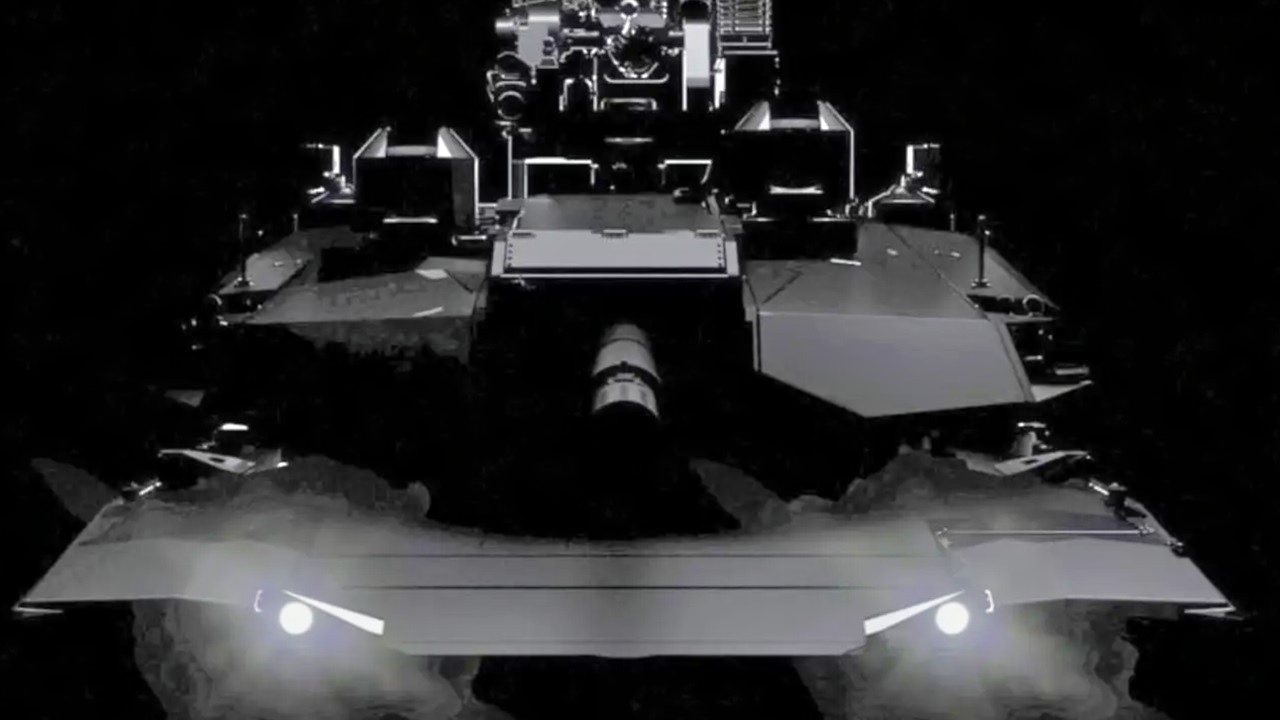Key Points and Summary – For 40+ years, the M1 Abrams has been America’s armored hammer—fast, deadly, and tough. Ukraine’s drone-soaked battlefield, though, is rewriting the rules. Enter AbramsX, General Dynamics’ tech demonstrator meant to bridge today’s Abrams to a future tank: hybrid-electric drive for quieter moves and big fuel savings, a lighter chassis, an autoloader and (optionally) unmanned turret to cut crew, and AI-enabled sensors built for manned-unmanned teaming.
-The catch? Adversaries may choose swarms, jammers, and cheap missiles over rival heavy tanks.
-If armor matters again, AbramsX could keep the breed alive. If not, it risks being the right answer to a fading question.
AbramsX: What Keeps the Tank From Dying in the Drone Age?
The M1 Abrams has been the standard-bearer of American tank power for over four decades, evolving through a series of continuous upgrades that have not only kept it competitive on the battlefield, but arguably the most capable armored vehicle on the planet.
Its combination of firepower, advanced protection, and mobility has long set a high bar. So high, in fact, that no near-peer adversary has been able to match its overall package fully.
But the war in Ukraine is forcing the United States and its adversaries to reassess whether the most advanced tanks can survive new battlefield dynamics now dominated by drones, loitering munitions, attrition, and networked sensors. For America’s near-peer adversaries, the war in Ukraine suggests that developing a competing platform to the Abrams may no longer be necessary.
In Ukraine, armored formations have come under relentless pressure from a range of unmanned systems. Analysts estimate that today, 65 percent or more of Russian armored losses have been attributed to first-person view (FPV) drones and small loitering munitions. Some reports even suggest that drones now account for a vast majority of battlefield casualties in Ukraine.
Meanwhile, Ukraine itself has scaled up drone production massively – reportedly reaching as many as 200,000 FPV drones manufactured per month by early 2025, with Ukrainian President Volodymyr Zelenskyy suggesting those numbers could increase dramatically by the end of the year.
Open source tallies also suggest that Russia has lost more than 3,000 tanks in the past year across its operations in Ukraine, while Kyiv’s forces have opted to change how they use tanks on the battlefield.

AbramsX Tank U.S. Army Image.
The likelihood of sudden drone attacks is now taken into consideration by military officials, who are increasingly deploying tanks in smaller formations to avoid making themselves targets.
This convergence of trends has raised numerous questions about the future of tanks in warfare and whether they may soon become relics.
Cheap drones and the proliferation of anti-tank guided missiles (ATGMs) challenge the logic of designing, building, and deploying heavily armored, high-cost platforms.
Yet rather than abandon the concept outright and risk allowing adversaries to develop their own competing, next-generation systems, General Dynamics Land Systems (GDLS) is betting on a new design: the AbramsX.
GDLS has positioned the AbramsX not as an incremental variant of the famous tank, but as a bridge to a future tank design. The design aims to combine mobility, networking technology, and survivability enhancements to keep the U.S. armored fleet relevant in a new era of drone warfare.
Meet the AbramsX
The AbramsX began life as a technology demonstrator unveiled by General Dynamics in 2022 at the Association of the U.S. Army (AUSA) exposition. It is conceived as a successor to and a supplement for the current M1A2 SEPv3 line, providing a bridge toward a future next-generation main battle tank.

U.S. Army soldiers assigned to Bravo ‘Bad Bet’ Company, 2nd Battalion, 12th Cavalry Regiment, 1st Armored Brigade Combat Team, 1st Cavalry Division, conduct Table V exercises with the M1A2 Abrams Tank at Bemowo Piskie Training Area, Poland, July 12, 2024. The purpose of the training is to ensure the Abrams were fully functional and fit to fight. The 1st Cavalry Division’s mission is to engage in multinational training and exercises across the continent, strengthening interoperability with NATO allies and regional security partners, which provides competent and ready forces to V Corps, America’s forward-deployed corps in Europe. (U.S. Army photo by Spc. Kali Ecton)
Its deployment, however, will be particularly consequential; not only must the AbramsX provide that bridge, but it must also prove that more advanced tanks will ultimately prove to be capable assets on the battlefield for a long time to come. A lot, therefore, depends on the success of the project.
At present, the U.S. Army is continuing to pursue upgrades to its Abrams fleet under the M1E3 engineering program.
In terms of timing, though, much remains entirely speculative. The existing demonstrator is intended to inform development decisions over the next decade, with any fielded version unlikely to emerge before the late 2030s. The U.S. Army’s roadmap still focuses on SepV3 modernizations and the E3 phase before a wholesale platform replacement will even be considered.
And on paper, the AbramsX is precisely that: a dramatic rethinking of the tank as we know it. Among the key features of the proposed tank is a hybrid diesel-electric power pack that promises approximately 50 percent improved fuel efficiency compared to current Abrams designs, and introduces a quiet mode that significantly reduces the audible noise of moving tanks compared to previous designs.
The design also offers reduced weight relative to the M1A2, improving deployability and mobility. Additionally, an unmanned turret—or an optionally unmanned turret—combined with an autoloader would reduce the tank crew from four to three.
A more modular architecture, advanced sensor suites, integrated artificial intelligence (AI) for fire control and battlefield networking, and compatibility with manned-unmanned teaming (MUM-T) are also crucial elements of a completely modern design aimed at reducing risk.
AbramsX: The Future of Tanks or the End?
Combined with a new main gun, secondary remote weapons stations, and emission control nodes for stealth movement or reduced detectability in sensor-rich environments would, in theory, make the AbramsX the ultimate in tank design.
The question, however, is how adversaries respond—and whether the AbramsX will ever actually be needed.
Whether the proposed AbramsX can truly save tanks from obsolescence may hinge less on its own capabilities than on how adversaries respond and the battlefield evolves.
If Russia and China continue to prioritize drones, electronic warfare, and cheaper countermeasures over developing rival tanks, the AbramsX could prove to be an overengineered solution to a problem that won’t exist for much longer.
But if heavy armor regains relevance in high-intensity warfare, its hybrid power, AI integrations, and survivability upgrades may make the AbramsX the tank that keeps the entire platform alive.
About the Author:
Jack Buckby is a British author, counter-extremism researcher, and journalist based in New York who writes frequently for National Security Journal. Reporting on the U.K., Europe, and the U.S., he works to analyze and understand left-wing and right-wing radicalization, and reports on Western governments’ approaches to the pressing issues of today. His books and research papers explore these themes and propose pragmatic solutions to our increasingly polarized society. His latest book is The Truth Teller: RFK Jr. and the Case for a Post-Partisan Presidency.
More Military
X-43A: It Could Hit Mach 9.6 and NASA Walked Away
Trump Wants a U.S. Navy Battleship Comeback: Reality Has Other Ideas
Russia’s Su-34 ‘Fighter Bomber’ Is Getting Blasted Out of the Skies Above Ukraine
Boeing X-32 vs. YF-23 Black Widow II Stealth Fighter: Who Wins Summed Up in 4 Words










